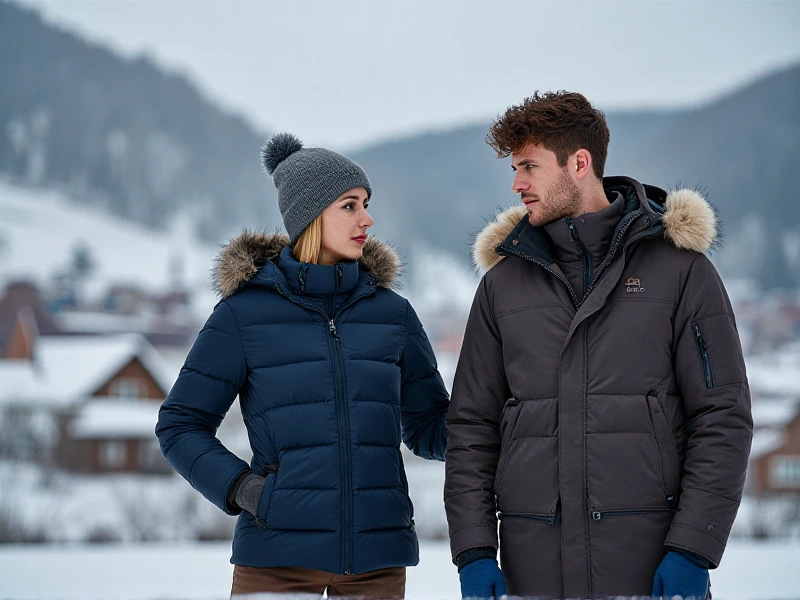The Ultimate Guide to Choosing the Perfect Men's Outdoor Coat
2025-06-05

Stepping into the great outdoors requires reliable gear, and nothing competes with a high-performance Men's outdoor coat at the core of your adventure ensemble. Whether you're scaling a frosty mountainside, braving city rainstorms, or embarking on an autumn hike, the right coat is your primary shield against the elements. This guide cuts through the noise, helping you select a men's outdoor coat that blends durability, functionality, and style for any expedition.
Why Your Choice of Men's Outdoor Coat Matters
A quality men's outdoor coat is far more than just an extra layer. It's your critical barrier against wind, rain, snow, and biting cold. A poor choice can lead to discomfort, reduced mobility, and even safety risks like hypothermia. Conversely, the perfect men's outdoor coat enhances your endurance, keeps you dry and warm, and allows unrestricted movement – turning challenging conditions into enjoyable experiences. Investing in the right technical outerwear pays dividends in comfort and confidence.
Key Factors When Selecting a Men's Outdoor Coat:
1. Intended Use & Climate: This is paramount. Ask yourself:
Activity: Hiking, skiing, urban commuting, camping, dog walking? High-intensity activities demand breathability; static ones need maximum warmth.
Conditions: Heavy rain/snow? Windchill? Moderate cold? Dry cold? Mild but wet? Identifying the primary threats informs shell type and insulation needs.
Duration: Short bursts vs. all-day exposure require different warmth capacities.
2. Weather Protection (Shell):
Waterproof Ratings: Measured in mm (e.g., 10,000mm). Higher = greater water pressure resistance. Look for genuine waterproofing (Gore-Tex, DryVent, Pertex Shield, eVent) over mere water-resistant finishes for serious rain/snow in a men's outdoor coat.
Windproofing: Essential for blocking chilling winds. Most technical shells are inherently windproof. Check seams are sealed and taped.
Breathability: Equally important as waterproofing to prevent sweat buildup. Measured in RET (lower = more breathable) or g/m²/24hr (higher = more breathable). DWR (Durable Water Repellent) coating helps shed rain and maintain breathability (requires re-treatment).
3. Warmth (Insulation):
Down: Natural goose/duck down. Excellent warmth-to-weight ratio, highly compressible. Ideal for dry cold. Look for high Fill Power (e.g., 700 ). Performs poorly when wet unless treated.
Synthetic (e.g., PrimaLoft, Thinsulate): Good warmth even when wet, dries faster, hypoallergenic. Bulkier than equivalent down in a men's outdoor coat but improving rapidly. Superior for wet, humid conditions or high activity.
Fleece Liners/Mid-Layers: Some coats incorporate or work in systems with zip-in fleece for adaptable warmth.
None (Hardshell): Pure protection against wind/rain. Warmth comes entirely from layered mid-layers beneath. Essential for variable/mixed conditions. Crucial element of a men's outdoor coat layering system.
4. Construction & Features:
Fit: Should allow layering underneath without excessive bulk. Adventure-specific designs often offer functional cuts (articulated elbows, slightly longer back). Ensure freedom of movement is paramount in a men's outdoor coat.
Hood: Adjustable, helmet-compatible if needed, wired brim greatly improves visibility in rain/snow. Essential for full protection.
Pockets: Zippered security is key. Hand-warmer pockets should be accessible over a harness/pack hip-belt. Chest pockets are great for essentials. Waterproof zippers add security.
Pit Zips: Major boost for venting excess heat quickly during exertion – a game-changer for breathable men's outdoor coats.
Cuffs: Adjustable (hook-and-loop or Velcro) ensure seal against wind and drafts.
Hem: Adjustable drawcords prevent cold air entry.
Durability: Reinforced high-wear areas (shoulders, cuffs) in tougher fabrics (e.g., ripstop nylon) are vital.
5. Materials, Weight, & Packability: Balance durability with weight. Consider how small you need the coat to pack down (important for backpacking).
Popular Types of Men's Outdoor Coats:
1. Hardshell Jackets: Pure defense against wind and water. Extremely lightweight and packable. Best for: Heavy rain, wind, snow, variable temps requiring versatile layering. Example: Gore-Tex Pro shells. Core men's outdoor coat for severe conditions.
2. Insulated Jackets (Down/Synthetic): Combine a weather-resistant shell (often softer/windproof rather than fully waterproof) with bulkier insulation. Best for: Sustained static cold activities, dry conditions, high warmth needs. Downside: Less versatile in very wet or highly active scenarios than layering.
3. Softshell Jackets: Highly breathable, wind-resistant, water-repellent (but rarely waterproof), stretchy, and quiet. Excellent mobility. Best for: High-output activities (trail running, hiking in moderate/dry cold) where ultimate weatherproofing isn't needed. Great men's outdoor coat for dry, cold, windy conditions without persistent wetness.
4. 3-in-1 Jackets: Versatile systems pairing a removable insulated mid-layer jacket with a hardshell outer. Best for: Adapting to changing conditions or maximizing use year-round. Offers flexibility but can compromise on optimized performance vs. standalone pieces.
5. Parkas: Long-length coats emphasizing maximum total-body warmth, often heavily insulated. Best for: Extreme cold, urban/suburban wear in winter. Not ideal for high activity but the warmest men's outdoor coat for brutal temperatures.
Beyond the Specs: Comfort & Feel
Try it on! Move your arms overhead, squat down, mimic your activity. Ensure linings feel comfortable against base layers. Hood adjustment must be intuitive. Listen for noisy fabrics if that's a concern. Ultimately, the best men's outdoor coat is the one you'll want to wear because it feels good and does the job without fuss.
Caring for Your Investment
Follow manufacturer’s cleaning instructions meticulously! Regular washing (with technical cleaner) revitalizes DWR treatment and removes dirt clogs that reduce breathability. Store synthetic insulation coats loosely; down coats should be stored loosely or in large breathable bags, never compressed long-term. Re-apply DWR treatment as needed when water stops beading noticeably.
Conclusion: Gear Up with Confidence
Choosing the ideal men's outdoor coat comes down to matching technical specifications to your specific outdoor pursuits and the environments you conquer. Prioritize the critical weather protection you need (waterproofing, windproofing) and match the insulation level to your activity intensity and typical temperatures. Don't overlook essential features like hood design, ventilation, and adjustable elements that fine-tune comfort. By making an informed choice, you ensure your outerwear is a reliable partner, letting you focus solely on the adventure ahead. Explore our curated collection to find your ultimate men's outdoor coat companion.
Category: